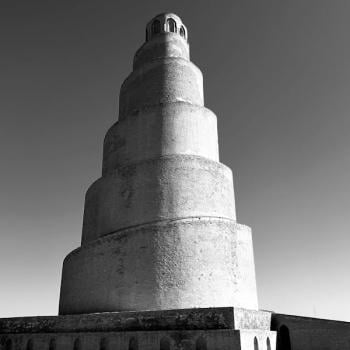Manjushri Yashas's method of teaching the brahmans reveals the methodology. Although many assertions of the brahmans' religion may serve as stepping-stones to Buddhism, not all the assertions that do so have an equal status. As with the Buddhist tenet systems, some of the brahmans' assertions can be accepted on a literal level as valid on the Buddhist path, such as certain features of astrology. Others need to be rejected as false on a literal level, despite having deeper valid levels of meaning. Moreover, within the latter category, Manjushri Yashas distinguished between those that have deeper meanings also within the Vedic context, and others that lack such meanings and are simply false.
The Issue of Unconscious Assimilation in Kalachakra
It is noteworthy that Manjushri Yashas did not warn Buddhists against unconscious assimilation into Islam, as he did the Hindus. In fact, the Kalachakra literature contains no mention of the followers of Islam explicitly trying to convert others to their religion, either forcefully or peacefully. Even when Manjushri Yashas predicted that, in 2424 C.E., a non-Indic ruler of India will threaten an invasion of Shambhala and the Twenty-fifth Kalki would defeat his forces in India, he speaks of a threatened military takeover, not specifically a religious takeover. The First Kalki addressed his warning only to the brahmans in terms of their assimilation into Islam now.
Perhaps the Kalki felt no need to warn the Buddhists, because he was confident in the strength of Buddhism and did not foresee its assimilation. This would mean, however, that the Kalki was naïve and his extrasensory perception of the future contained a flaw, which is an uncomfortable conclusion for Buddhists to draw. Perhaps, assimilation of Buddhism into Islam had not yet occurred to a significant degree at the time when the Kalachakra teachings emerged in India. Historical evidence, however, indicates that by the late 10th century C.E., not only Hindu, but also many Buddhist landowners, merchants, and urban educated persons -- particularly in Central Asia, northern Afghanistan and southern Pakistan -- were already converting for various reasons, including economic advantage. Islamic rulers were not forcing them to convert upon penalty of death if they refused. They could keep their religions if they paid a poll tax.
Alternatively, Manjushri Yashas might have believed that if people of all religions united in the Kalachakra mandala and those who were "ripe" converted to Buddhism, this would be the best solution to the problems of the difficult times. A population threatened by invasion and military takeover can only surmount the danger if it presents a united front. The Buddhists would naturally come to the Kalachakra empowerment. Therefore, the First Kalki needed to address only the non-Buddhists of Shambhala. This seems to have been the main motive for conversion to Buddhism "for those who were ripe."
It is curious, however, that one of the tactics the First Kalki used to unite the Hindus and Buddhists was a tactic that the Ismaili Shiite Muslims later used to assimilate Hindus as a stepping-stone for their eventual conversion. In the 13th-century C.E. text Dasavatara, Pir Shams-al-Din identified the tenth and final avatar of Vishnu, Kalki, with the first imam, Ali. The Ismaili imams were the successors to Ali and, in accepting Ali as Kalki, the Hindus would also be accepting the legitimacy of his Ismaili successors. Similarly, Manjushri Yashas termed himself Kalki, also to gain the acceptance of the Hindus.
Accommodation of Islam into Buddhism
Manjushri Yashas even explained how the stepping-stone method could also lead followers of the non-Indic religion to Buddhism. Apparently insensitive to the strong Islamic prohibition of renouncing Islam and converting to a different faith, his priority seems to have been uniting people of all faiths, not just Hindu and Buddhist. After all, there must have also been Muslims in Shambhala, and they faced the same threat of invasion and military takeover as did everyone else. This certainly was the case in eastern Afghanistan and Oddiyana (northwestern Pakistan) at the time, the most likely location where knowledge of Islam derived.
The First Kalki described the non-Indic religion as asserting external matter as consisting of atoms, a permanent soul that temporarily takes rebirth, and the achievement of the happiness of a heavenly rebirth as the highest goal. Knowing the disposition of people with such beliefs, he explained that Buddha taught in accordance with what they could accept. In certain sutras, Buddha taught that the body of a bodhisattva about to achieve Buddhahood is made of atoms. Elsewhere, he explained that a continuity of "self" exists, which carries responsibility for experiencing the results of its behavior (karma), but without speaking of the "self" as either permanent or impermanent. Buddha also taught the provisional goal of achieving better rebirth in a heavenly god realm. The assertions of the non-Indic religion can function as stepping-stones toward accepting these sutras and onward to increasingly more sophisticated Buddhist explanations.




